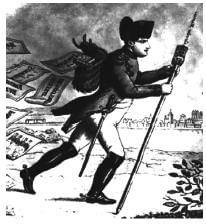Test: Class 10 Social Science: CBSE Sample Question Paper- Term I (2021-22) - Class 10 MCQ
30 Questions MCQ Test - Test: Class 10 Social Science: CBSE Sample Question Paper- Term I (2021-22)
Who among the following formed the secret society called `Young Italy’?
Which one of the following states was ruled by an Italian princely house before unification of Italy?
Which of the following countries is considered as the 'Cradle of civilisation'?
The civil code of 1804 in France is also known as:
What was the purpose of Jacobin clubs?
Which of the following is an example of Cultivable Wasteland ?
"There is enough for everybody's need and not for anybody's greed". Who said this ?
Resources which are surveyed and their quantity and quality have been determined for utilisation isknown as
Barley: Rabi crop, Cotton: Kharif crop, ................ : Zaid crop.
A type of millet rich in iron, calcium, other micro nutrients and roughage is ___________.
When was States Reorganisation Commission formed ?
What status has been given to Hindi by the Constitution of India?
Who is the head of urban local government ?
In which year, a major step was taken towards decentralisation?
Belgium is a small country in Europe, its area is smaller than:
Belgium does not share its borders with:
Which one of the following States in India had its own constitution?
Development of a country can generally be determined by –
By national income, we mean the money value of –
According to per capita income prepared by the World Bank in 2017, in which category is Indiaincluded –
Which of the following is not a criterion for comparing development of different countries?
Kerala has a low Infant Mortality Rate because–
Find the incorrect option from the following:
A person is considered undernourished if his BMI is–
Who is represented as a postman in the following image?

Arrange the following in the correct sequence:
(i) Slav nationalism gathers force in the Habsburg and Ottoman Empires.
(ii) Unification of Germany.
(iii) Victor Emmanuel II was declared as the king of united Italy and Rome was declared the capital of Italy.
(iv) The Prussian King, William I was proclaimed the German Emperor.
Which among the following best signifies the idea of liberal nationalism of nineteenth centuryEurope?
Match the following items given in Column A with those in column B:

Analyze the information given below, considering one of the following correct options :
(i) It is formed by the deposition of alluvium brought down by the east flowing peninsular rivers.
(ii) It is highly fertile.
(iii) It consists of various proportions of sand, silt and clay.
(iv) It is rich in potash, phosphoric acid and lime but deficient in organic matter.
Find the incorrect option from the following about plantation farming:















